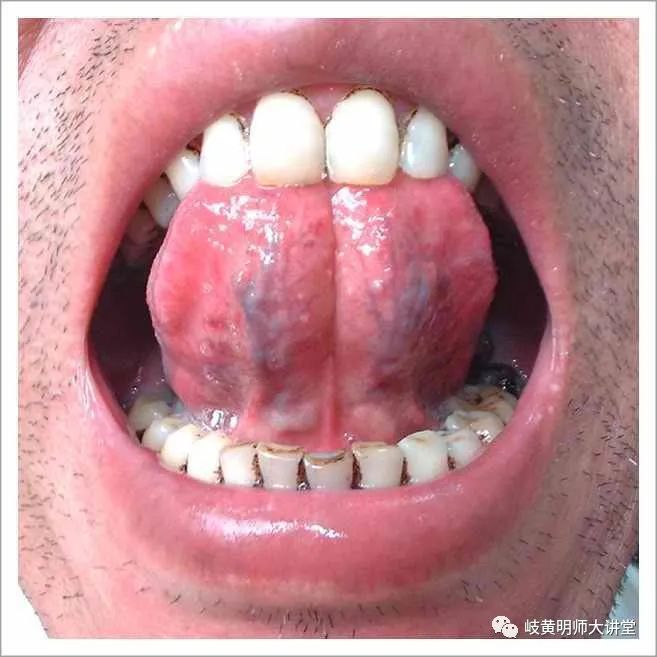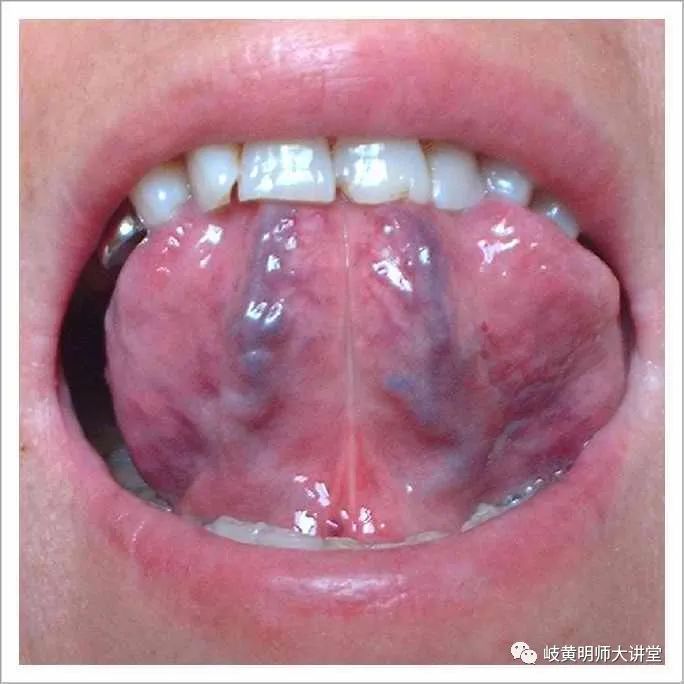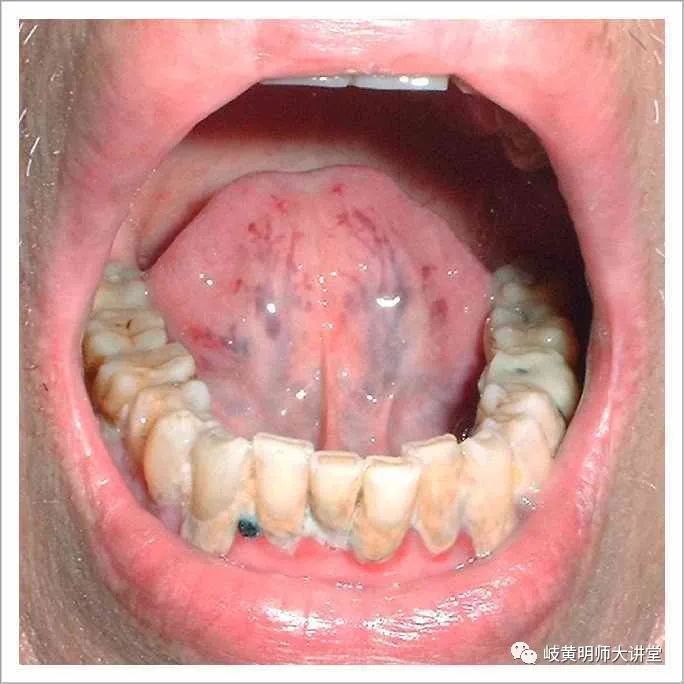Subscribe to topics and read quality articles

Click on Qihuang Ming Shi → Top right corner of the homepage → Set as a star
★
Sublingual Vessels
The sublingual vessels are the longitudinal veins located on both sides of the lingual frenulum, primarily reflecting the state of Qi and blood circulation. Common abnormal manifestations of the sublingual vessels include: coarse and long vessels resembling a net, varicose vessels, and blood stasis in the vessels.
1. Normal Sublingual Vessels (Figure 2-66)
 Figure 2-66 Normal Sublingual Vessels
Figure 2-66 Normal Sublingual Vessels
Characteristics: The sublingual vessels are large longitudinal vessels located on both sides of the lingual frenulum, with a diameter of less than 2.7mm and a length not exceeding 3/5 of the distance from the sublingual tubercle to the tip of the tongue. The color of the vessels is light purple.
Clinical Significance: Normal sublingual vessels.
2. Coarse and Long Vessels Resembling a Net (Figures 2-67, 2-68)
 Figure 2-67 Coarse and Long Vessels Resembling a Net 1
Figure 2-67 Coarse and Long Vessels Resembling a Net 1
 Figure 2-68 Coarse and Long Vessels Resembling a Net 2
Figure 2-68 Coarse and Long Vessels Resembling a Net 2
Characteristics: The sublingual vessels are swollen and elongated, appearing purple or purplish-black in a net-like pattern.
Clinical Significance: This is a sign of Qi and blood stagnation.
3. Varicose Vessels (Figure 2-69)
 Figure 2-69 Varicose Vessels
Figure 2-69 Varicose Vessels
Characteristics: The sublingual vessels are significantly varicose and thickened, with a color of bluish-purple or dark purple.
Clinical Significance: Often caused by Qi stagnation and blood stasis, leading to obstructed blood flow.
4. Blood Stasis in the Vessels (Figure 2-70)
 Figure 2-70 Blood Stasis in the Vessels
Figure 2-70 Blood Stasis in the Vessels
Characteristics: The sublingual vessels or smaller vessels appear bluish-purple or purplish-black, or the vessels may present as unevenly sized blood stasis nodules resembling purple beads.
Clinical Significance: This is a sign of blood stasis, which can be caused by various factors such as blood cold, blood heat, Qi stagnation, phlegm-dampness, and Yang deficiency.
Editor: Zhi Zi Proofreader: Bai Hui
▶ This article is organized and published by Pei Yi Education, excerpted from “Clinical Illustrated Guide to TCM Tongue Diagnosis”. The copyright of the content published on this platform belongs to the relevant rights holders. If there are any improper uses, please feel free to contact us for negotiation. The various prescriptions and formulas mentioned are for reference and learning purposes only and should not be used as prescriptions. Please do not use them blindly; this platform does not bear any responsibility for any consequences arising from this!]

-
TCM Tongue Diagnosis: Illustrated Guide to 14 Types of Tongue Shapes and Qualities
-
TCM Tongue Diagnosis: Illustrated Guide to 4 Types of Tongue States
-
TCM Tongue Diagnosis: Illustrated Guide to 11 Types of Tongue Colors
Join the WeChat Pure Group, no spam, learn together every day(Valid for 7 days, please check the latest articles if expired)


Your likes and views are appreciated!
